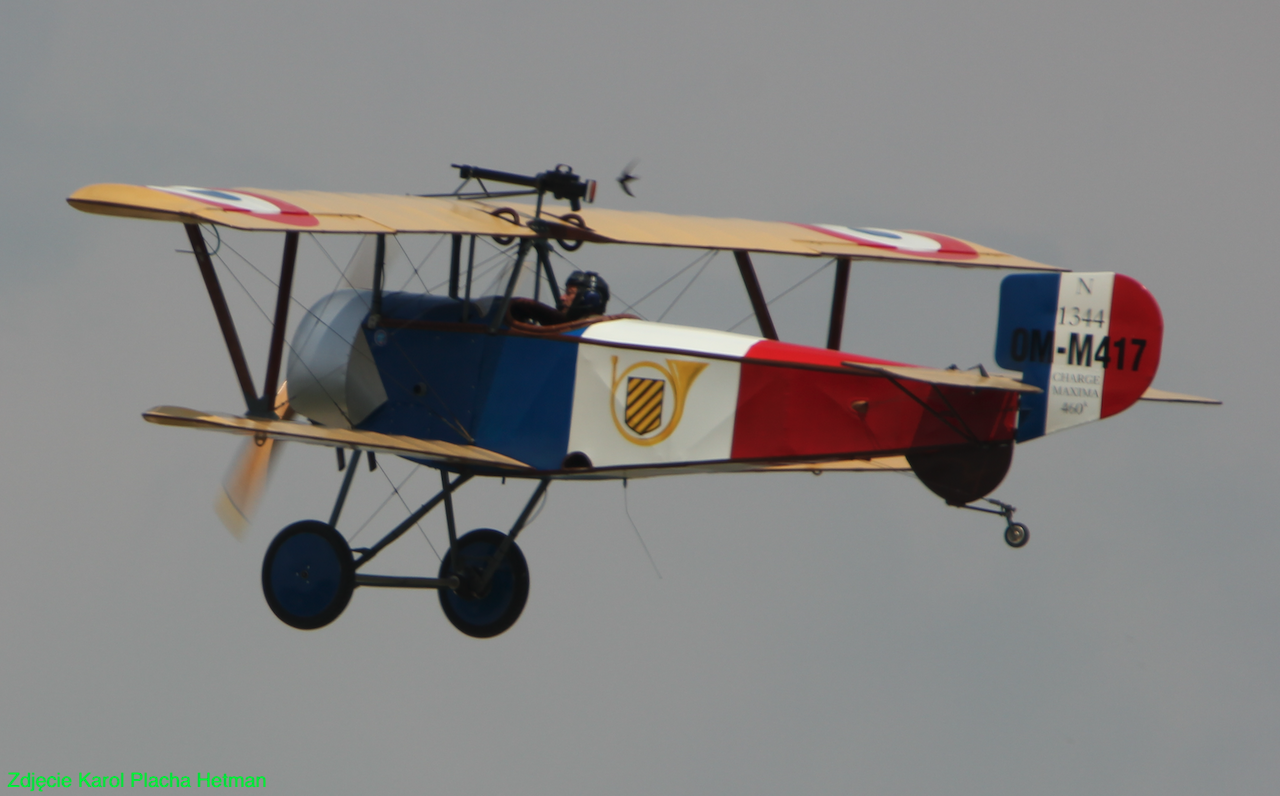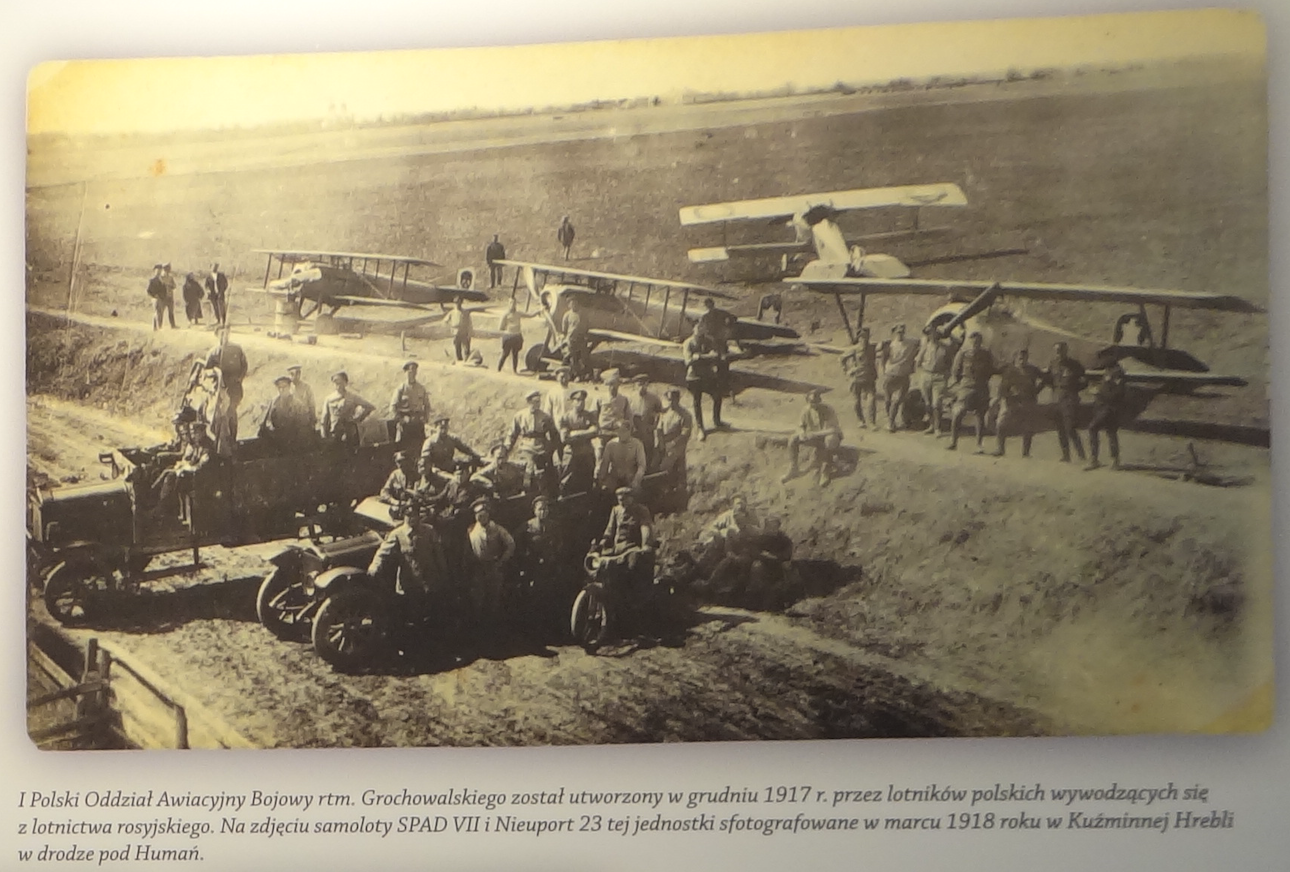Kraków 2018-11-20
1st Polish Aviation Branch in Russia.
July 19, 1917 – April 1918.
The 1st Polish Aviation Detachment in Russia was a combat unit established as part of the 1st Polish Corps in Russia. Historically, it was the first Polish Aviation Unit, formed before the rebirth of the Republic of Poland.
The 1st Polish Corps in Russia was formed in a very complicated political and military situation. The Great World War had been going on for over three years and there was no end in sight. Poland’s invaders began to bid among themselves for the future vision of a "free" Poland, promising a lot to the Polish Nation. At the same time, they demanded the provision of recruits for their armies. Deeds had to follow the promises. As a last resort, the Muscovites agreed to create the 1st Polish Corps composed only of Polish soldiers from the Russian army. The 1st Polish Corps was formed on July 24, 1917. The soldiers were recruited from Russian units fighting on the Western Front and the Northern Front, which included the Belarusian Lands, Polesie, Lithuania and Latvia. The creation of the 1st Polish Corps was opposed by Polish communists in Russia who sympathized with the Bolsheviks, and the Bolsheviks received funds to wage the civil war from the Germans.
General Józef Dowbor-Muśnicki was appointed commander of the 1st Polish Corps on August 6, 1917. In January 1918, the 1st Polish Corps numbered 27,000 soldiers.
The 1st Polish Corps was supposed to fight against the Germans. However, the situation at the front and inside the Muscovite state resulted in the Corps’ tasks being changed. General Józef Dowbor-Muśnicki did not want to get involved in the civil war. Because the conditions set by the Bolsheviks were unacceptable, the 1st Polish Corps fought against the Red Guard troops. The Corps achieved a number of victories. Especially in the area of Bobruisk (Bobrujsk about 100 km south-east of Minsk) and Minsk (Minsk Litewski).
After the Treaty of Brest, General Józef Dowbor-Muśnicki tried to maneuver around. An open confrontation with the Germans could have led to the decimation of the Corps. Ultimately, the general decided to disband the Corps. On May 21, 1918, the 1st Polish Corps was disarmed in Bobruisk. The last transport of Corps troops left Bobruisk on July 8, 1918. In Bobruisk, at the local war cemetery, there was a high mound with a cross on the top, under which about 2,000 Polish soldiers from the 1st Polish Corps were buried.
Then, the Dowborians joined the Polish Army and took part in the Greater Poland Uprising.
The 1st Polish Corps was well organized and armed. Much of the military equipment came from France. The corps included a lancer division, two artillery brigades, a heavy artillery division, a mortar division, an engineering regiment, auxiliary troops, a hospital and the 1st Polish Aviation Unit.
1st Polish Aviation Branch.
Many soldiers of Polish origin were sent to aviation units in the tsarist army. As many as 91 of them achieved officer ranks. In accordance with the agreement concluded with the Russian army, on July 19, 1917, the 1st Polish Aviation Unit was established in Minsk. The commander of the unit was captain pilot Zygmunt Studziński, who in December 1918 had already served at Pole Mokotowskie as a lieutenant colonel.
Initially, the 1st Polish Aviation Unit had only one French aircraft in service; Nieuport 11C1 Bebe. The machine had no armament. The plane was donated by General Antonio Denikin.
In December 1917, the name of the unit was changed to the 1st Aviation Corps. Then its commander was Lieutenant Colonel Pilot Piotr Abakanowicz.
On February 21, 1918, Polish railway workers unexpectedly equipped the 1st Aviation Corps with 16 planes, which came from railway transport coming from the front in Kozyrewo. The planes were repaired at the Bobruisk Air Base. The work was led by Ensign Engineer M. Tłuchowski.
On March 10, 1918, there were already 76 pilots in the 1st Aviation Corps, including 51 officers. The unit was stationed in Babruisk.
In March 1918, the unit received the RBWZ Ilia Muromiec G-II (G-36) No. 182 aircraft, along with its crew. This aircraft was built and handed over to the Russian army on July 16, 1916. After some time, he returned to the factory, where the engines were replaced. It was the fastest Ilia Muromets copy of 80 machines. In March 1918, this plane was in Vinnytsia. Due to the threat of the Germans taking over the city, colonel pilot J. S. Baszko evacuated the plane and landed in the meadows near Bobrujsk (March 6, 1918). The route was 450 km long. On April 15, 1918, the plane was entered into the aviation department’s inventory register. On March 27, 1918, the plane was transferred to the airport in Bobruisk. Due to lack of fuel, the plane did not make many flights. On May 26, 1918, (according to the Julian calendar), at 02:00 in the morning, the plane took off so as not to fall into the hands of the Germans, who were already 4 km away from the airport. The plane set course for Moscow. The crew had to make an emergency landing 100 km before the target. The crew fell into the hands of the Bolsheviks. The entire crew (Colonel Pilot J. S. Baszko, Captain Skuratowicz, Tromszczyński and Wyrzykowski) were arrested. The Poles managed to escape and reached France through Murmansk, joining the Army of General Józef Haller.
On April 2, 1918, a holy mass was celebrated during which the aircraft were blessed. The unit’s aircraft included: Nieuport 11C1 Bebe, Nieuport 17C1, Nieuport 21E1, Nieuport 23C1, Morane-Saulnier MS-3 Parasol, Morane-Saulnier MS-4 Marczet, Voisin III(LA), Farman F-30 and RBWZ Ilia Muromiec G -II (G-36) No. 182.
In April 1918, Germanic troops approached Bobruisk. On the orders of lieutenant colonel pilot Piotr Abakanowicz, the planes were destroyed, and a few days later the unit was disarmed.
Back in May 1918, there were plans to create a new armed force – the Polish Air Force – on the basis of the 1st Aviation Corps. The commander was to be lieutenant colonel pilot Piotr Abakanowicz. The aviation unit shared the fate of the entire 1st Polish Corps.
Written by Karol Placha Hetman


